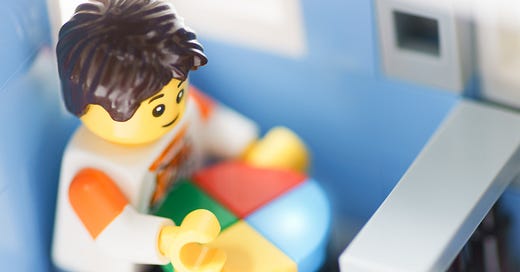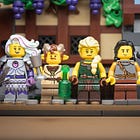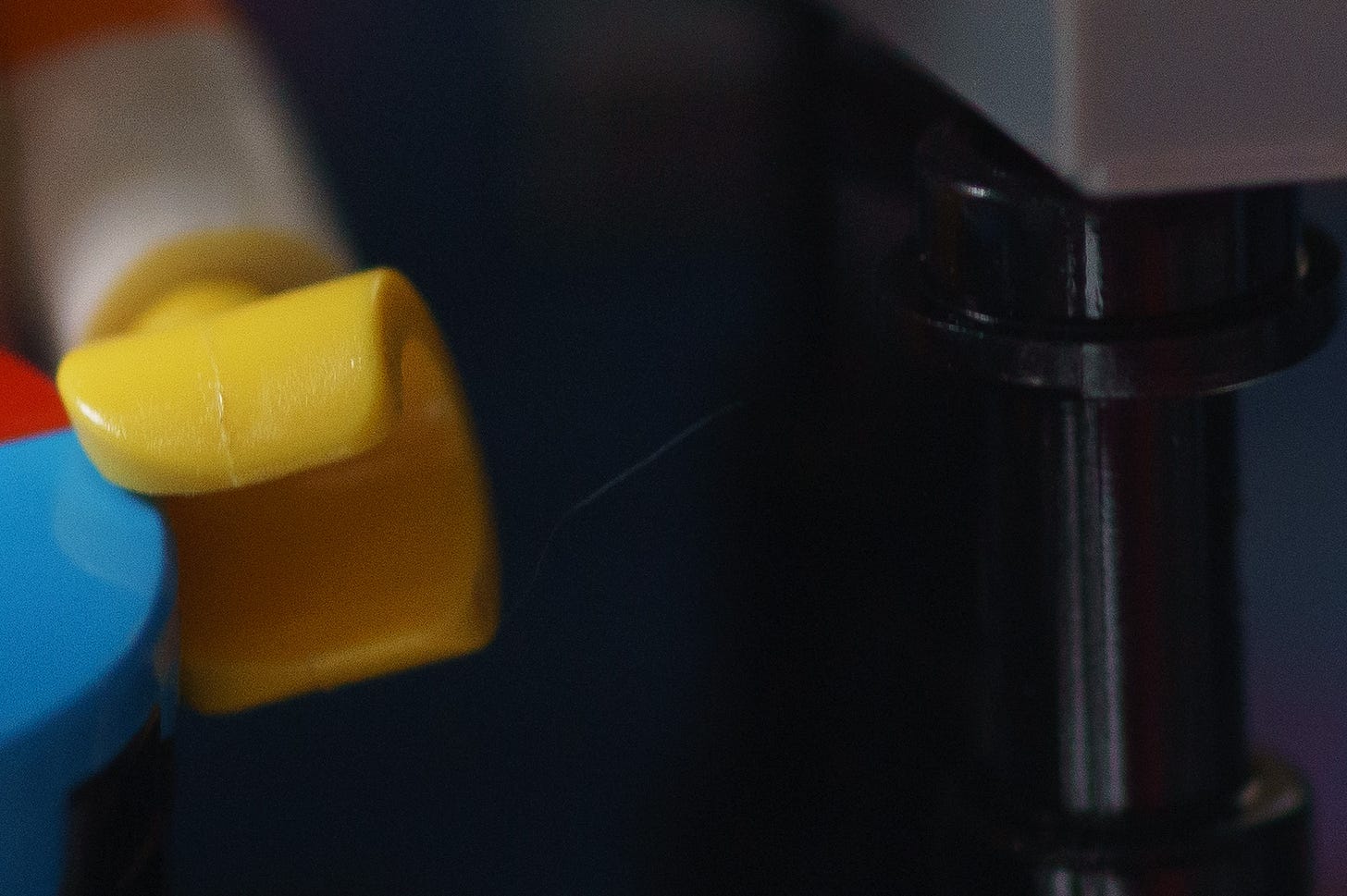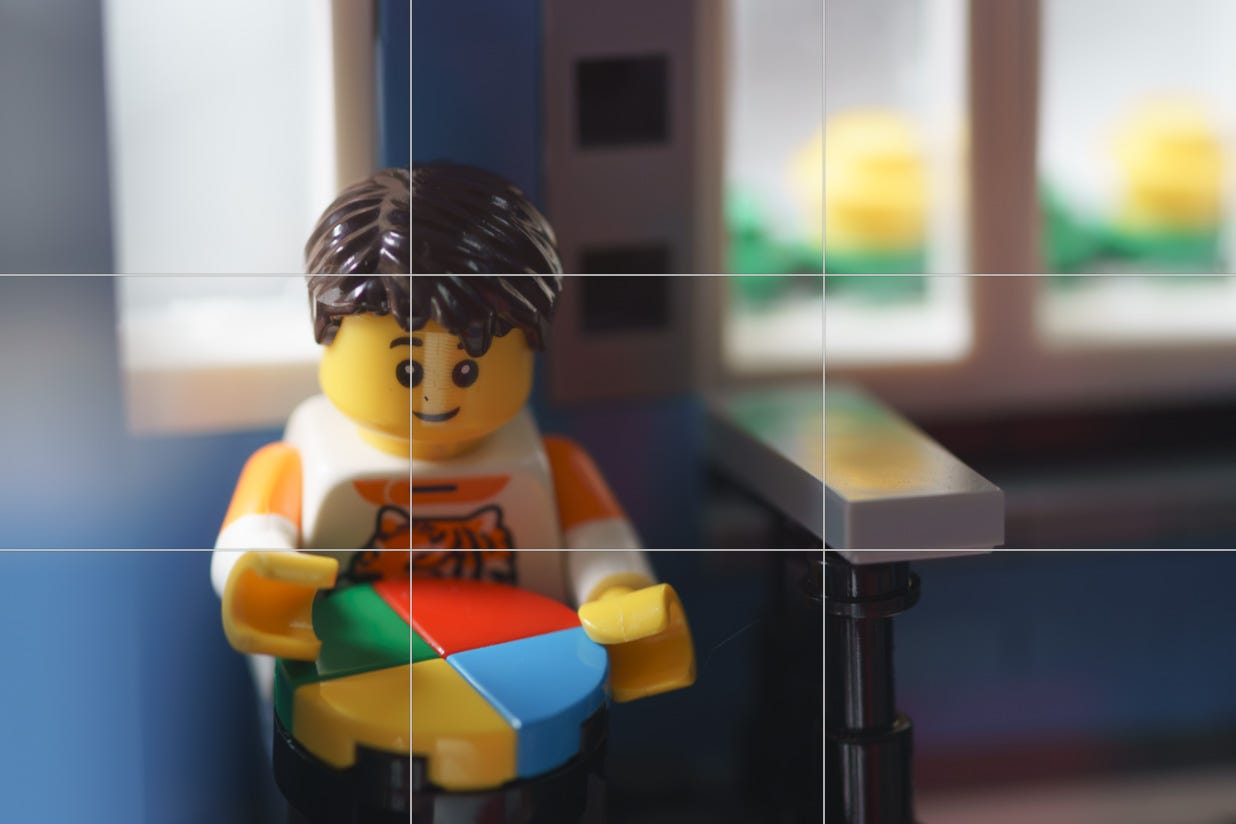Why bad photographers think they're great
The Dunning-Kruger effect and how to avoid being ignorant
If you’ve spent a good amount of time in any photography community, you’re bound to come across at least a handful of people who think they create absolutely stunning photos despite proof to the contrary. Their photos are basic at best, but to hear (or read) the photographer describe them, epic.
Even more likely, you were this person at some point. At least I was like that when I was just starting out in toy photography.
Scrolling through my “epic” photos from way back and recalling my mindset at the time makes me laugh at myself for thinking my iota of photography knowledge was worth parading so publicly.
I remember shooting with my first-ever macro lens years ago— the full-metal beast that is the Minolta 100mm f2.8— and was thrilled at the ultra-shallow depth of field, magnification, and narrow field of view I was able to achieve with it.
But when I look at some of those photos now, the sliver of focus and tight framing was rarely the smart choice.
Here’s one I thought was amazing at the time:
The idea was to capture a feeling of nostalgia with a childhood game, but I didn’t even get the Simon memory game in focus which was the whole point of the shot lol. It’s just that minifig’s nearest eye and the hand that are sharp.
Yet despite this flaw, there I was thinking this photo was epic because it had a really narrow depth of field and tight framing of a minifig, both of which were relatively new to me as a toy photographer.
I couldn’t see that it was a bad photo back then because I didn’t even recognize the obvious mistakes: I didn’t know that I didn’t know.
There’s a name for this phenomenon: the Dunning-Kruger effect.
It’s defined as “the tendency of people with low ability in a specific area to give overly positive assessments of this ability.” Or put more simply, thinking you know everything but you don’t know shit.
Bad drivers who think they’re great drivers are an oft-cited example of people suffering from the Dunning-Kruger effect. So are tone-deaf singers who audition for talent shows like American Idol. The most famous fictional character who thinks they’re better at something than they really are is Michael Scott, the inept manager in the hit American TV series, The Office.
On the chart below, those people sit on the peak on the left:

This graphic plots confidence against competence and explains that people with little or limited ability tend to think they know everything about something and that they’re awesome at it— overconfidence in their abilities. It’s the pinnacle of the Dunning-Kruger effect and what we mostly refer to when we talk about this bias.
It’s usually beginners at that highest point which is no surprise. Beginners are brand new to an activity so by definition, they have little ability. Like me with the macro lens— that was a brand-new experience for me even though I had been shooting for years.
But it can also be the “one-trick pony” types who’ve confined themselves to doing the same thing, the same way over and over again. Their skill set and experience are limited to just that one thing. (There’s something to be said for style but I’ll tackle that another day.)
In the middle of the chart where it dips the most are people with more talent or wider experience. They’ve explored a bit more and realized that they don’t know a whole lot, and might feel overwhelmed or discouraged by all the learning that’s ahead.
On the far right side are the experts: people who know they’re good at what they do but are aware there’s really no end to the learning. They’ve experimented a lot and relish a good challenge. They might even underestimate their skill or how much they know, which is why their confidence sits somewhere in the center.
So bad photographers who think they’re really good are generally people with high confidence in their ability, but low competence in it. They’re especially easy to spot on social media because they load up on superlatives like “awesome” and “epic” to describe themselves and their own work.
But why do these bad photographers think they’re really good in the first place?
Because the foundations of photography— exposure controls and basic composition techniques— are easy to grasp and can be put to use quickly. It feels like the bulk of the learning is over.
It’s only when beginners and one-trick ponies start to improve and go beyond the basics do they realize that they have a lot more to learn and it doesn’t happen quite as fast, so their confidence or perceived ability starts to drop.
Unfortunately, being a Dunning-Kruger peak visitor is usually a hindsight thing: you only realize you weren’t as good as you thought you were until after you’ve progressed. Because the skill you need to understand how good you are at something is the same skill as being good at that thing. (There are exceptions here, of course.)
The worse part about the Dunning-Kruger effect is it’s a double curse:
incompetent people don’t know they’re incompetent, and
they’re unable to tell the difference between competence and incompetence.
In other words, bad photographers can’t see that their own work is lacking, but they also can’t see what makes a good photo good. Naturally, they’re unable to recognize the skill of better photographers.
The good news is that everyone has spent some time on that Dunning-Kruger summit at some point in their life, so it’s nothing to really beat yourself up about. It’s embarrassing but also human.
(I might have added that it’s mostly harmless too, but that’s no longer true since self-proclaimed experts will post dangerous misinformation on social media that really can kill people. Our photography hobby isn’t nearly as controversial but we do it on social media instead of privately these days, and Instagram in particular is a pretty hostile place for our mental health.)
So how do we avoid being ignorant of our ignorance?
The first rule of the Dunning-Kruger club: talk about the Dunning-Kruger club! Just acknowledging that it’s a thing that we’re all susceptible to sets you on the path to self-awareness.
Next, keep learning and improving. You should be able to see the difference in your work from one point to the next and identify mistakes in your older work. If you don’t, that’s a clear sign you’re at the Dunning-Kruger peak.
Finally, seek feedback from more knowledgeable photographers and be open to acting on it. It’s tough to hear someone pick apart your best work but no pain, no gain.
Don’t seek comfort in your cohorts or praise from your peers— you’ll get it but that’s just the blind leading the blind. Avoid enablers and toxic positivity because it does you no good if you’re trying to grow.
Worse than looking for support from people who suppress any kind of negative feeling is taking likes, comments, and other social media metrics as useful or meaningful feedback.
If you’re really looking to improve your photography, a hollow engagement from a distracted scroller isn’t going to get you anywhere except more time at the Dunning-Kruger peak. Besides, most people consuming your work on social media aren’t exactly gauging your artistic skills but are probably just liking it for the subject.
Also remember that every time you advance, you’re on a mini version of the Dunning-Kruger chart with each new photography tool or technique you explore. So give yourself a good amount of time practicing and using it before declaring mastery of it. That’s the mistake that got you to the peak the first time around!
Being able to realistically assess your own skill level is important because it shows you what you need to work on next to become a better photographer.
If you look at the Dunning-Kruger chart as a representation of your photography journey, you’ll find that exploring new things, getting better feedback, and enjoying the process is what moves you away from being ignorant of your ignorance. Stay curious and be humble!
Toy Photography Tips
I haven’t shot anything for nearly all of July since I was on vacation in Italy, so I practiced my editing skills on one of the rejected Simon photos I shot 5 years ago instead.
Not too bad, but my tip isn’t a step-by-step on how I edited rather, how post-processing (“post” for short) forces me to evaluate my photos and helps me grow as a photographer.
If you want to learn photography faster and better, shooting a lot and evaluating your photos are no doubt two of the best things you can do. Editing is where you really dive into the details and can see the mistakes you made much more clearly. So in my workflow, I use post as an evaluation tool.
This old image from my Simon photo session was rejected for an obvious reason: the glare on the face. I probably couldn’t eliminate the reflection of the bounce card so I ended up changing my camera angle as a solution.
Apart from that glaring mistake, I thought there were other issues with the photo as well. Let’s evaluate:
So first off, props to me for getting the minifig’s face and the Simon memory game in focus, unlike that other photo I shared at the top of the essay.
There’s the shot-ruining glare that’s hard to miss, however, I spotted a speck of dirt there too when viewing on my computer monitor. I probably couldn’t see this with my eyes or looking at the small LCD on my camera.
I noticed something else around the minifig too so I zoomed in a little and saw a thin spiderweb extending from its left hand to the— what’s that? The banister wasn’t even connected properly, dammit! The spiderweb I can forgive but not the banister. I can’t even fix that in post with my limited compositing skills.
Zoomed back out, I saw that I tried to compose using the Rule of Thirds with the minifig along the first vertical line and the banister along the second. I don’t think the space to the right added anything useful to the photo though.
If I had this scene setup still and working with the same gear I had back then, I’d easily fix these issues and reshoot:
wipe down the minifig to get rid of the speck of dirt and spiderweb
put that banister together properly
reposition the bounce card or the set to avoid that glare
use a tripod instead of shooting handheld for longer exposure rather than higher ISO to prevent noise
line up the verticals
frame tighter and close down the aperture to offset the shallower DoF from moving closer in
But that was 5 years ago so I’ve tediously edited the photo with those thoughts in mind instead:
It took significantly more time to do this in post, about half an hour, where it would have taken me just a few minutes to get it right in-camera.
I don’t usually edit photos to fix bad shooting decisions after the fact, but rather to enhance what was already there and do things that are too impractical to do physically. That’s my philosophy. My typical editing session is a lot more minimal and looks like this.
Still, this was a good exercise in self-critique and problem-solving nonetheless. I identified all the issues with my photo and how I would have redone it. I also forced myself to refine other skills outside my usual.
Making mistakes and then learning from them is how you grow. Post-processing is an opportunity to really examine your photo in detail and see your mistakes.
So if you’re one of those toy photographers who doesn’t include post-processing in your workflow, I think you’re missing out on a valuable tool for learning.
Even if you never alter your photos, post-processing forces a change in purpose, environment, and mindset that’s different from your shooting phase where you’re prone to make the most mistakes.
Toy Photography Features
Features from the toy photography community will be back next month. (I didn’t have a lot of time and I inadvertently took up all the space in the tips section.)











Thanks for this article Anna.
All in all, I'm glad my lack of confidence allowed me to skip this stage in toy photography. Anyway, I can't imagine adding "check out this epic shot" or "I took amazing photo today" to the post. It's just not me. Of course, there are photos that I'm happy with, but I don't put it right under the photo, at most if someone writes in the comment, then I reply that I'm also happy with this photo.
Of course, sometimes it's worth showing off if we feel that we've achieved something in our photo, but it's also worth avoiding extreme and vague terms like "epic". Humility towards yourself is probably the key in such a situation.
Thanks! Good article. Sometimes i also take an old photo and go crop and turn to check how to get a better composition. Helpt me getting beter photos.